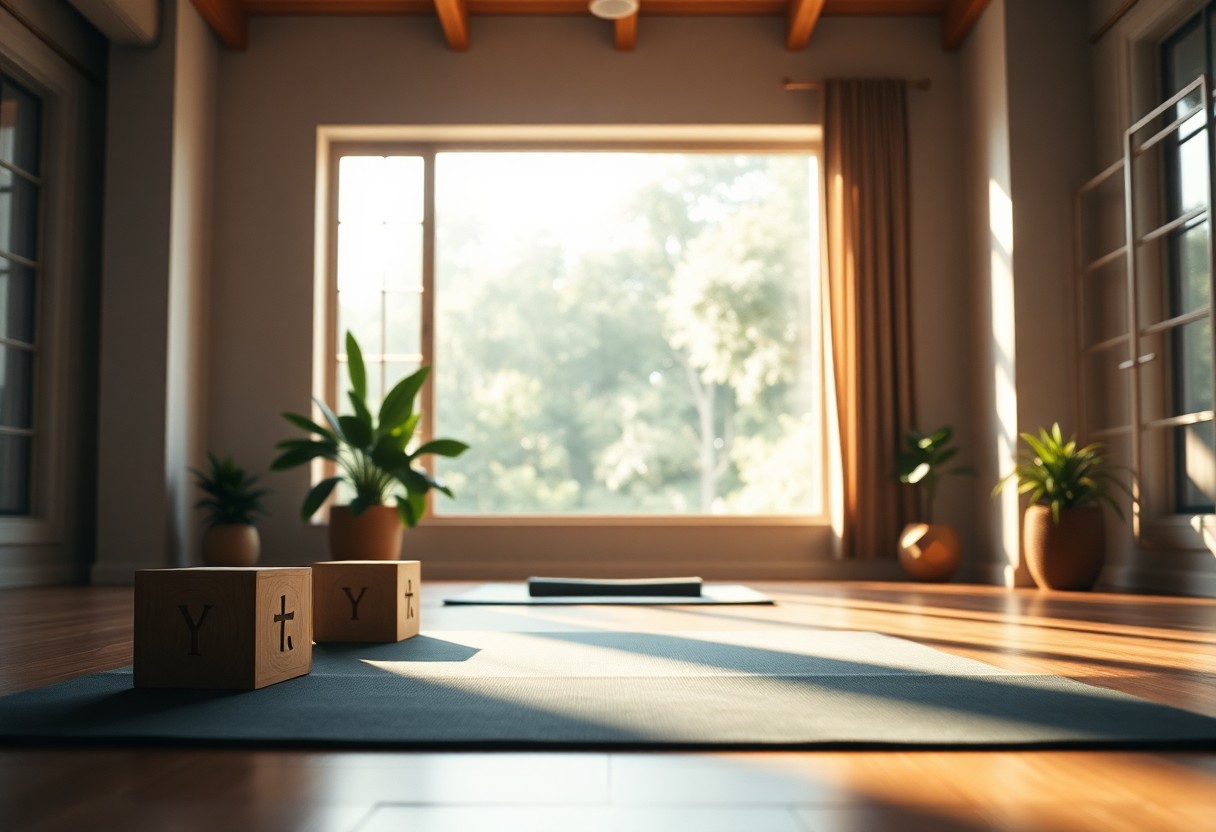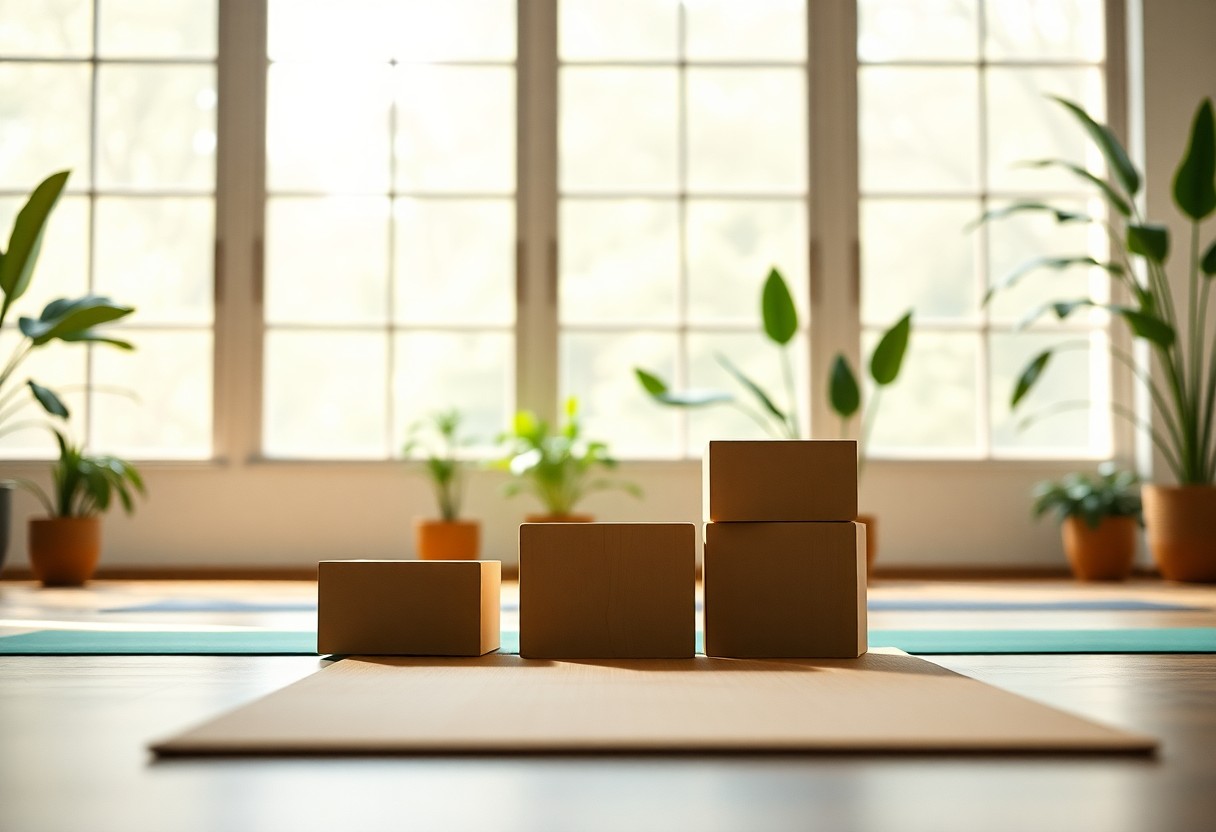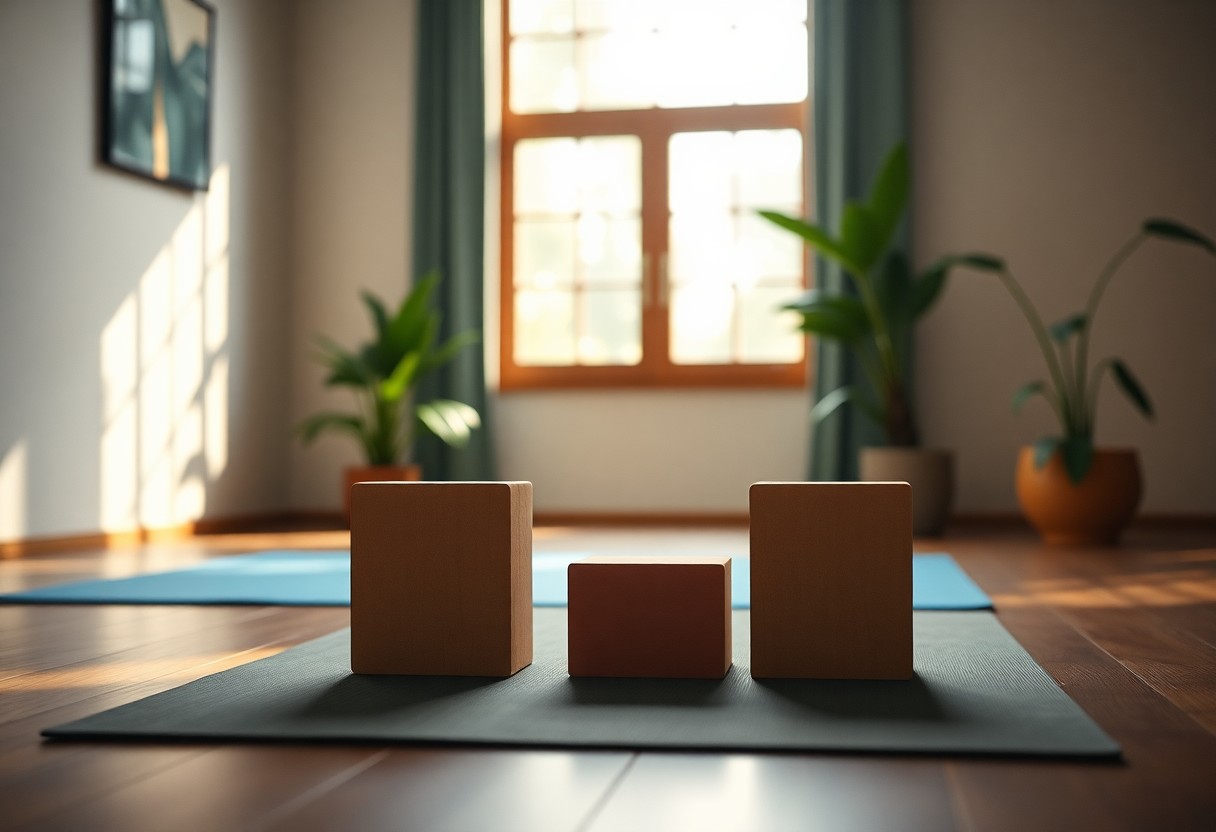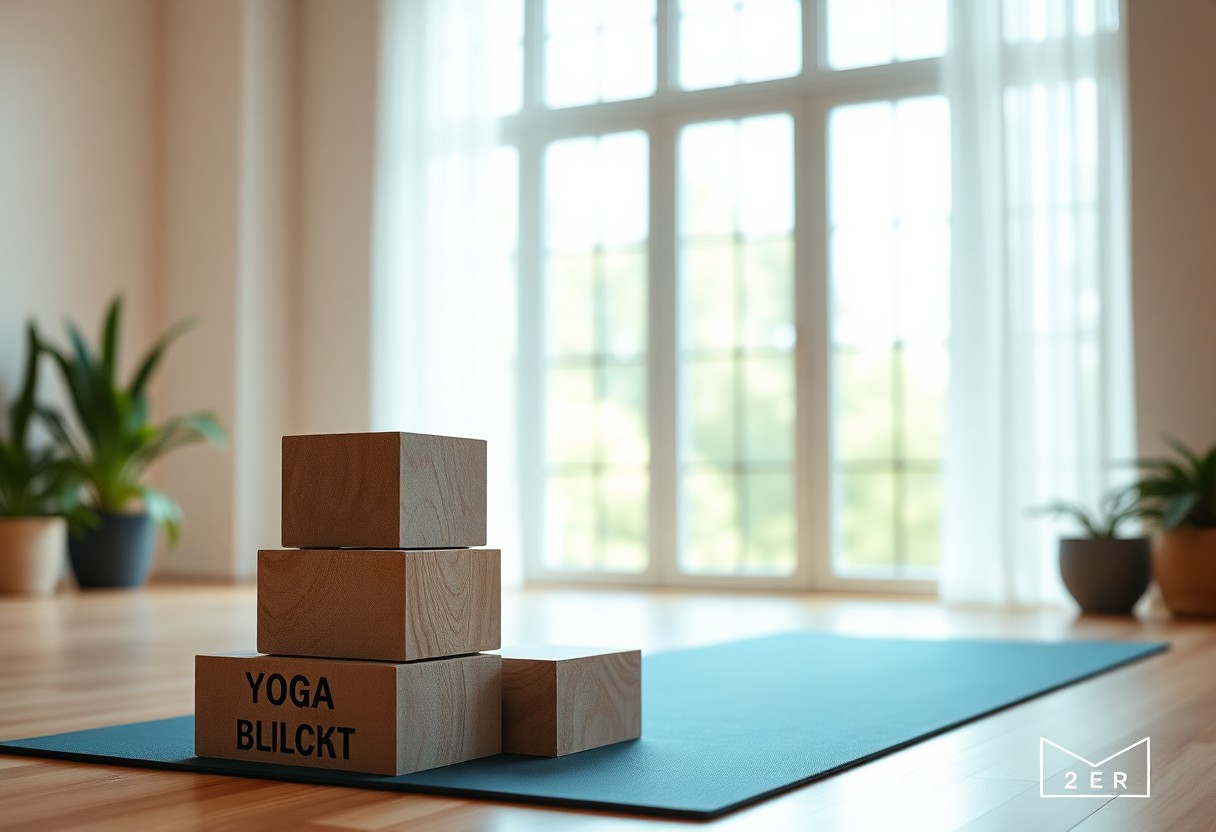Ever wondered how to make your yoga practice more accessible, effective, and even challenging? You’re not alone! Yoga blocks can be a game-changer, helping you deepen your practice, overcome flexibility limitations, and add resistance to take your poses to the next level. But how do they work, and what are the benefits of using them? Let’s dive in and explore the world of yoga blocks together!
What Are Yoga Blocks?
Before we probe the world of yoga blocks, let’s start with the basics. A yoga block is a prop that can enhance your yoga practice. Typically rectangular and made from foam or cork, yoga blocks can help you feel more supported in various poses by having something firm to press against, make certain poses more accessible to beginners or people with different body types and abilities by “bringing the ground closer” to you, and even make some movements more challenging when you’re ready to progress by adding resistance.
Definition and Purpose
Among the various yoga props available, yoga blocks are one of the most versatile and widely used. Their primary purpose is to provide support, stability, and alignment in different yoga poses, allowing you to deepen your practice and achieve a greater range of motion.
Brief History of Yoga Blocks
Below the surface of modern yoga lies a rich history of innovation and adaptation. While yoga blocks may seem like a recent invention, their origins date back to the early days of yoga in India, where practitioners used wooden blocks and bricks to support their bodies in various poses.
Yoga blocks have come a long way since then, with modern materials like foam and cork offering a more comfortable and sustainable alternative. Today, yoga blocks are an necessary part of many yoga practices, providing a means to modify poses, build strength, and increase flexibility. According to the American Council on Exercise (ACE), yoga blocks are often thought of as “an extension of the arms,” allowing you to reach new heights and depths in your practice. Whether you’re a beginner or an experienced yogi, yoga blocks can help you take your practice to the next level.


Why Should You Use Yoga Blocks?
It’s almost easier to ask why wouldn’t you use yoga blocks? From helping you feel more supported in various poses to making certain movements more challenging, yoga blocks can elevate your practice in numerous ways.
Benefits for Beginners
After all, yoga blocks can be a game-changer for beginners. They can help you feel more comfortable and confident in your practice, especially in poses that require flexibility or balance. By providing support and stability, blocks can allow you to focus on your breath and alignment, rather than struggling to reach the ground.
Advantages for Experienced Practitioners
Practitioners who have been practicing yoga for a while can also benefit from using blocks. They can add an extra challenge to your practice, helping you build strength and endurance. For example, you can use blocks to deepen your stretches or to add resistance to your movements.
Hence, whether you’re just starting out or you’re looking to take your practice to the next level, yoga blocks can be a valuable tool. By providing support, stability, and challenge, blocks can help you get the most out of your practice and achieve your goals. So why not give them a try?
How to Use Yoga Blocks
Now that you know why you need yoga blocks in your practice, it’s time to learn how to use them effectively. Whether you’re a beginner or an experienced yogi, blocks can help you deepen your practice, improve your alignment, and add a challenge to your poses.
Basic Placement and Alignment
Alignment is key when using yoga blocks. Typically, you’ll place them on the floor or your mat underneath your hands, feet, back, or forehead, or squeeze them between your legs or hands. The exact placement will depend on the pose and your goals.
Adjusting Block Height and Angle
Above all, it’s important to adjust the height and angle of your blocks to suit your needs. You can use blocks at three different heights: stand a block up on one of its shortest edges to use it at its tallest height, stand a block on one of its long edges for medium height, and lay the block down flat on one wide side for the lowest height.
To adjust the angle of your blocks, experiment with different positions until you find what feels most comfortable and supportive for your body. For example, if you’re using a block in a forward fold, you may want to angle it slightly to allow for a deeper stretch. As Emma Michel notes, “Blocks can create more space in certain postures,” so don’t be afraid to experiment and find what works best for you. Why you absolutely need to use yoga blocks in your practice. Bear in mind, the key is to listen to your body and adjust your blocks accordingly.
How Yoga Blocks Can Act As Support
Once again, yoga blocks prove to be a game-changer in your practice. By providing support, they allow you to relax and sink deeper into stretches and postures, which can be especially helpful if you’re new to yoga or dealing with limited flexibility or mobility.
Modifying Poses for Injury or Limited Mobility
On days when you’re feeling a bit stiffer than usual or nursing an injury, yoga blocks can be a lifesaver. By using them to modify poses, you can still get a great workout while protecting your body from further strain. For example, if you’re struggling with a standing forward fold, placing a block under your hands can help you reach a deeper stretch without putting too much pressure on your hamstrings.
Enhancing Balance and Stability
Below your feet, yoga blocks can provide the extra stability you need to balance in tricky poses. Take Warrior 3, for instance – having blocks under your shoulders can help you maintain proper alignment and prevent you from tipping over.
Modifying your practice with yoga blocks can also help you build strength and confidence in balancing poses. By starting with blocks and gradually removing them as you gain more stability, you’ll be able to tackle even the most challenging poses with ease. Note, it’s all about listening to your body and honoring its limitations – and yoga blocks can be a powerful tool in helping you do just that.

How to Use Yoga Blocks to Make Yoga Poses More Accessible
Keep in mind that yoga blocks are not just for beginners or those with limited flexibility; they can also be used to deepen your practice and make certain poses more accessible. By using blocks, you can modify poses to suit your needs, making yoga more inclusive and enjoyable for everyone.
Opening Up Tight Shoulders and Chest
Around 90% of people experience shoulder tension, which can make certain yoga poses uncomfortable or even painful. By using a yoga block, you can open up your shoulders and chest, creating more space and freedom in your upper body.
Deepening Forward Folds and Backbends
Against the misconception that yoga blocks are only for beginners, using blocks can actually help you deepen your forward folds and backbends. By placing a block under your hands or forehead, you can create more space and length in your spine, allowing for a deeper and more comfortable stretch.
Further, using blocks in forward folds can help you maintain proper alignment and prevent straining your neck or back. This is especially important for those with back or neck injuries, as it allows them to still experience the benefits of forward folds without putting unnecessary strain on their bodies. By using blocks, you can focus on lengthening your spine and deepening your stretch, rather than struggling to reach the floor.
Which Yoga Blocks Are Best for You?
Now that you know the benefits of using yoga blocks, it’s time to choose the right ones for your practice. With so many options available, selecting the perfect blocks can seem overwhelming, but don’t worry, we’ve got you covered.
Material Options: Foam, Wood, and Cork
Beside the standard rectangular shape, yoga blocks come in various materials, each with its own advantages. Foam blocks are soft and gentle on your joints, while wood blocks provide a more solid support. Cork blocks, on the other hand, offer a sustainable and eco-friendly option.
Size and Shape Considerations
To ensure you get the most out of your yoga blocks, consider the size and shape that suits your needs. Standard blocks are usually 9 inches by 6 inches by 4 inches, but you can find thicker or thinner options depending on your personal preference.
Hence, it’s important to think about how you plan to use your blocks. If you’re looking for extra support in deep forward bends, a thicker block might be ideal. On the other hand, if you’re using blocks to add a challenge to your practice, a thinner block could be more suitable. Note, the right size and shape will depend on your individual needs and goals.
How Many Blocks Should You Use?
Unlike other yoga props, the number of blocks you need can vary depending on the pose and your goal. According to the American Council on Exercise (ACE), you may want one or two blocks, depending on the pose you’re doing and your goal for working with props.
General Guidelines for Block Placement
Guidelines for block placement will depend on the specific pose and your body type. For example, you might want two blocks for poses that involve planting both hands on your mat, while one block is plenty if you’re using it for support when balancing on just one arm.
Customizing Your Practice with Multiple Blocks
Placement of multiple blocks can help you deepen your practice and add challenge. For instance, you can use two blocks to create more space in certain postures, or use one block to add resistance and challenge to certain movements.
At the same time, using multiple blocks can also help you modify poses to make them more accessible. For example, you can use two blocks to support your back, head, and/or hips in a pose, or use one block to “bring the ground closer” to you in a forward fold. By experimenting with different block placements, you can customize your practice to suit your needs and goals.
How to Use Yoga Blocks for Beginners
To get started with yoga blocks, it’s vital to understand the basics of how to use them. Yoga blocks can be used to support your body, add a challenge, and make yoga poses more accessible. In this section, we’ll explore how to use yoga blocks for beginners, including foundational poses and block placement, building confidence and strength, and more.
Foundational Poses and Block Placement
Before you start using yoga blocks, it’s crucial to understand the basic poses and how to place the blocks correctly. Start with simple poses like standing forward fold, warrior 3, half split, and supported bridge. Place the blocks at different heights depending on the pose and your personal preference. For example, in standing forward fold, place the blocks at their tallest height in front of you, while in supported bridge, use the blocks at their lowest height underneath your lower back.
Building Confidence and Strength
Along with supporting your body, yoga blocks can also help you build confidence and strength. By using blocks to modify poses, you can work on building strength and flexibility without feeling overwhelmed or intimidated.
Understanding how to use yoga blocks to build confidence and strength is key. For example, in warrior 3, using blocks under your shoulders can help you maintain proper alignment and balance, while in half split, blocks under your shoulders can allow space in your spine to lengthen and your hamstrings to stretch. By using blocks in this way, you can build strength and confidence in your practice, and eventually progress to more challenging poses without the blocks.
Warrior 3
All yogis, regardless of level, can benefit from using yoga blocks in Warrior 3. This pose requires balance, strength, and flexibility, making it a great opportunity to utilize blocks for support and alignment.
Using Blocks for Balance and Alignment
Behind every strong Warrior 3 is a solid foundation, and yoga blocks can help you establish that foundation. By placing blocks under your shoulders or hands, you can maintain proper alignment and balance, ensuring that your body is in a safe and stable position.
Deepening the Pose with Block Support
After you’ve established a strong foundation, you can use blocks to deepen the stretch and challenge of Warrior 3. For example, you can place a block under your front foot to lift your leg higher, or under your back foot to stretch your calf and ankle.
But don’t forget to engage your core and maintain proper alignment as you deepen the pose. With block support, you can focus on lengthening your spine, engaging your core, and stretching your legs, making Warrior 3 a more challenging and rewarding experience.
Supported Bridge
For a gentle and restorative variation of the bridge pose, yoga blocks can provide excellent support and relaxation. By placing a block under your lower back, you can release tension and allow your muscles to relax, feeling completely supported and comfortable.
Lifting the Hips and Opening the Chest
Between the pressure of daily life and the constant demands on our bodies, it’s easy to feel weighed down and compressed. In supported bridge, the block helps to lift the hips and open the chest, promoting a sense of expansion and freedom.
Modifying for Different Body Types
At its core, yoga is about listening to your body and honoring its unique needs. Pertaining to supported bridge, using blocks can be especially helpful for those with back or hip issues, as it allows for a more gentle and controlled movement. Here’s how to modify:
| Body Type | Modification |
| Back Issues | Use a thicker block or multiple blocks for extra support |
| Hip Issues | Place the block under the lower back, rather than the hips |
| Tight Hips | Use a block to lift the hips, rather than relying on flexibility |
| Pregnancy | Use a block to support the lower back and promote comfort |
Opening up the possibilities for modification, yoga blocks can help make supported bridge accessible to everyone, regardless of body type or ability. Perceiving the block as an extension of your body, you can focus on deepening your breath and relaxing into the pose.
- Back Issues: Use a thicker block or multiple blocks for extra support
- Hip Issues: Place the block under the lower back, rather than the hips
- Tight Hips: Use a block to lift the hips, rather than relying on flexibility
- Pregnancy: Use a block to support the lower back and promote comfort
Perceiving the block as an extension of your body, you can focus on deepening your breath and relaxing into the pose. By honoring your body’s unique needs and limitations, you can experience the transformative power of supported bridge, and cultivate a deeper sense of connection and awareness.

How to Use Yoga Blocks for an Added Challenge
After mastering the basics of yoga blocks, you can take your practice to the next level by using them to increase the intensity of your poses. This is especially useful for more advanced yogis who want to push themselves further.
Increasing Intensity with Block Placement
Around the same time you’re looking to challenge yourself, you can experiment with different block placements to add resistance to your movements. For example, you can place a block between your legs while doing boat pose to engage your core and add weight as you transition through the pose.
Engaging Core Strength and Balance
Around the time you’re working on your core strength and balance, you can use yoga blocks to make certain movements more challenging. For instance, you can squeeze a block between your legs while moving from high to low boat pose to create more weight as you transition through both postures.
In fact, using yoga blocks in this way can help you build more strength and control in your core muscles, which is vital for maintaining good posture and balance in various yoga poses. By adding resistance to your movements, you can engage your core muscles more effectively and take your practice to the next level.
Boat to Low Boat
Your ability to transition smoothly between boat and low boat poses can be greatly enhanced with the use of yoga blocks. By squeezing a block between your inner thighs, you can create more resistance and challenge your core muscles, making the transition more engaging and effective.
Using Blocks for Support and Balance
An added benefit of using blocks in this pose is the support and balance they provide. As you lean back and extend your legs, the block helps to stabilize your body, allowing you to focus on maintaining proper form and engaging your core muscles.
Smoothing the Transition between Poses
To take your practice to the next level, use the block to slow down the transition between boat and low boat. As you lean back, focus on controlled movements, keeping your back straight and your core engaged. The block will help you maintain balance and stability, allowing you to move with precision and control.
And by using the block to create resistance, you’ll be able to build strength and endurance in your core muscles, making the transition between poses feel more natural and effortless over time. With consistent practice, you’ll be able to increase your flexibility and range of motion, taking your yoga practice to new heights.
Seated Forward Fold
Not everyone can comfortably rest their forehead on their mat in a seated forward fold, but with yoga blocks, you can.
Deepening the Fold with Block Support
Forward folding can be challenging, especially if you have tight hamstrings or limited flexibility. By placing a block under your forehead or hands, you can deepen the fold and maintain proper alignment without straining your back or shoulders.
Releasing Tension and Increasing Flexibility
The seated forward fold is an excellent opportunity to release tension in your neck, shoulders, and spine. By using a block to support your forehead or hands, you can relax into the pose and allow your body to surrender, increasing flexibility and range of motion.
And, as you hold the pose, focus on breathing deeply and slowly, feeling the stretch in your hamstrings and calves. As you exhale, allow your body to release further into the fold, releasing any tension or stress. Remember to listen to your body and only go as deep as feels comfortable and safe.
Summing up
Conclusively, yoga blocks are an imperative tool for yogis of all levels, providing support, accessibility, and challenge to deepen your practice. Whether you’re a beginner looking to modify poses or an advanced practitioner seeking to intensify your workout, yoga blocks can help you achieve your goals. By understanding how to use yoga blocks effectively, you can enhance your flexibility, balance, and strength, and take your yoga practice to the next level.
Frequently Asked Questions About Yoga Blocks
Q: What are yoga blocks used for?
A: Yoga blocks are props that can enhance your yoga practice by providing support, making certain poses more accessible, and adding resistance to make movements more challenging. They can help you feel more supported in various poses, “bring the ground closer” to you, and make some movements more challenging when you’re ready to progress.
Q: How do I use yoga blocks?
A: You can place yoga blocks on the floor or your mat underneath your hands, feet, back, or forehead, or squeeze them between your legs or hands. The exact ways in which you’ll use your yoga blocks will depend on what you want to get out of them. You can use yoga blocks to help support you, add a challenge, and to make yoga poses more accessible.
Q: What are the benefits of using yoga blocks?
A: Yoga blocks can support your back, head, and/or hips, improve postural alignment and flexibility, make certain poses more accessible to all skill and ability levels, and add resistance and challenge to certain poses. They can also help you feel more confident and comfortable in your practice, allowing you to focus on your breath and alignment.


